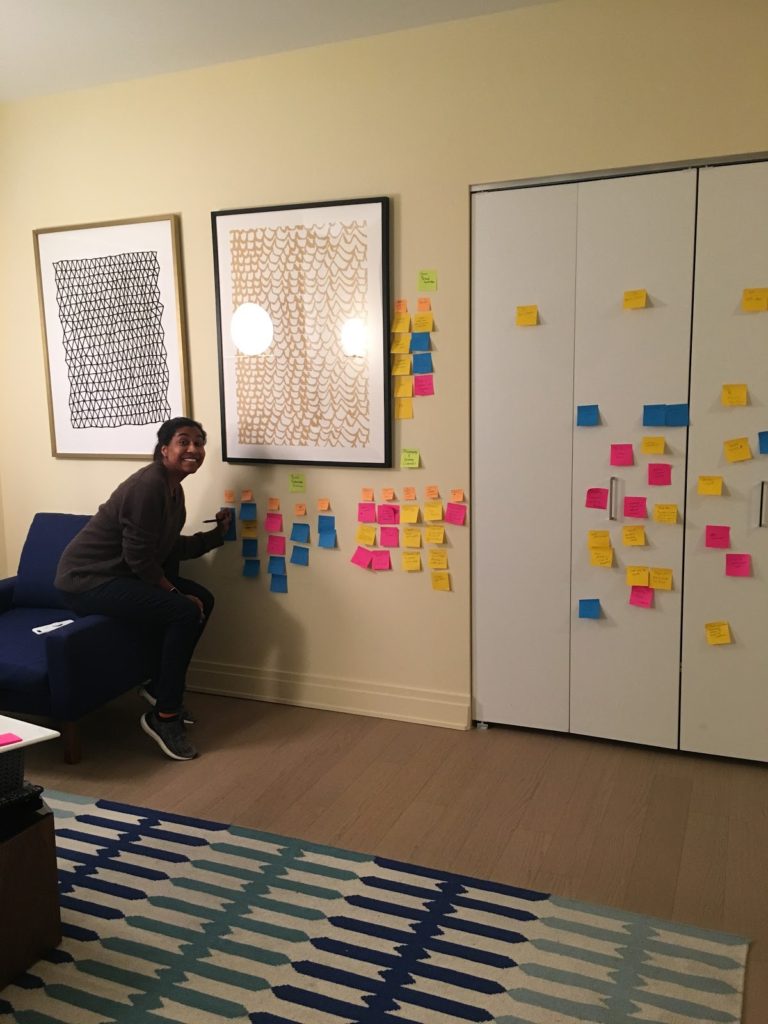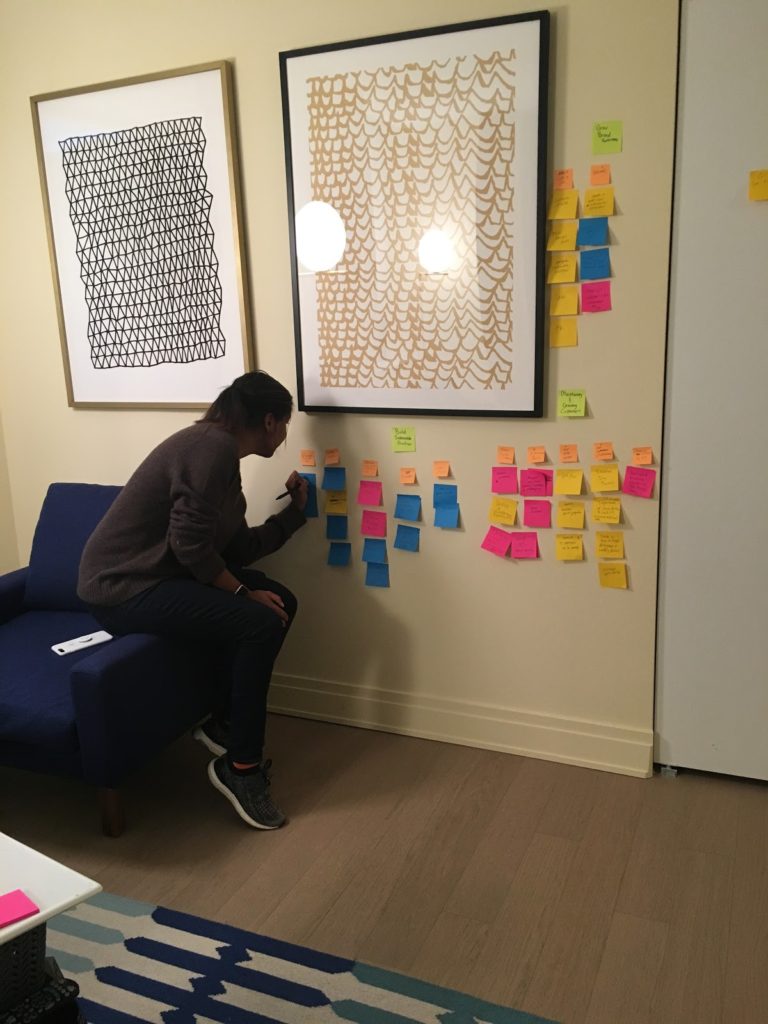By Leslie Wong, CEO & co-founder of Burgundy Fox
(The Guest Blogging Series: While Natalie is recovering from surgery, her friends have offered to bring you incredible content. Learn more about the author of this post at the end and be sure to leave some love.)
When you’re the owner of a small business, goal planning can be a challenge. You wear multiple hats in a day and most times you’re struggling to get half your to-do list done, let alone plan for tomorrow and the next 90 days after that. Ever hear the expression “can’t see the forest for the trees� Goal planning is important if you want to avoid being that person! When there are a million things that could be done, choosing to focus on the ones that move the needle, is goal planning. When I was a manager for global corporations, goal planning looked very different than when I worked for smaller companies, startups and now my own business. In a business with fewer people, each person has more to do and carries a greater individual impact. Think of a 20 person crew versus a 2 person rowboat. You need every rower heading in the same direction, especially when you’re small! Using my past experiences goal planning, I applied a simple approach to planning the first quarter of 2018 as a new, small business.
1. Make a plan
Pick a system
Congrats! You’ve decided to jump out of the hamster wheel of to-do’s and be strategic about what you’re trying to accomplish. So where to start? Luckily, there are existing frameworks to guide goal planning. Even if you work alone, be thoughtful about picking a system that makes sense to your business. Start internalizing and socializing the verbiage of the framework so it becomes part of your culture. You can pick a framework and modify it to work for you. Search ‘frameworks for goal planning’ and you’ll find several. My friends Reina and Dannie just published, Big Plan for the Creative Mind, which is a collection of planning tips from various leading creatives. At Burgundy Fox, we use a framework used by Intel and Google called the OKR system. In combination with OKRs, we incorporate a couple of planning elements from another company known for its productivity, Asana. Learn about OKRs here and more about Asana’s planning frameworks here.
Make an agenda (steps of making an agenda)
Figure out how much time you can carve out away from your day-to-day tasks for uninterrupted planning time. I recommend at least 1 day so your mind is focused on one thing. Create an agenda of all the things you want to accomplish during that session and share it with your team so they can contribute to it. Once you finalize the agenda, share it with the attendees at least 3 days before the meeting. In our agenda, I included:
- Rules
- Desired outcomes
- Day by day schedule
- Tips:
- Plan an hour lunch, 2 fifteen minute breaks, and a start and end time. The goal is to approach the sessions with mental energy
- We started at 10am and ended at 5pm. The start time allowed us to manage customers or partners in the morning and the end time allowed us rest (more than usual) to come back mentally sharp
- Have energizing snacks and beverages ready. Stay focused, keep your phone away and your laptop closed
- Tips:
Get the tools
Here is a list of inexpensive items that were essential:
-
- Different color post-it notes. We used at least 5 to code by team discipline, key result and objective
- Blank paper, poster or whiteboard to write notes on
- A blank wall, a table, a whiteboard, poster paper, something you can write and stick notes on
- Pens & markers. We didn’t find a need for multiple colors, but you might
2. Build a base
Take an inventory
Take an inventory of your past performance, both in measured performance and observations. A week before we met, we reviewed our company’s financial growth. What did you set out to accomplish that you did or didn’t achieve? What factors or practices helped or prevented you from achieving it? What was enjoyable and successful? Why? Look at your existing practices and challenge if they could be better, faster, more productive, or not necessary at all? My co-founder and I made our own lists individually, writing one observation per post-it. We used different colors for each part of the company, so we could notice themes and group them easier.
Create a culture
As you’re creating this inventory, notice recurring themes and think about how to avoid repeating the same habits OR how to reinforce and maintain effective habits. Write a list of practices or systems that will keep you accountable to the goals you’re about to set. Will you restructure a meeting around these goals? Create boundaries around your days and weeks? Schedule no meetings on Monday to let you focus on other priorities? Plan times to celebrate company wins? These are some examples of creating a culture that will support positive outcomes for your business.
Ask deep questions
Before jumping into planning, take time to discuss your ‘why’ and ‘who’. Our ‘why’ looks like our mission statement: To empower and celebrate all women by curating intimate apparel for all sizes. We took some time to dissect this mission again word by word, and shared personal stories about why this is important to us. We also refer to our mission statement as our north star, a concept that helps guide us in making decisions for our customer. We reviewed our customer personas, or profiles of our customers. If you don’t know your customer, how will you reach and serve her well? Review and discuss your customer personas, ensuring they are still relevant and useful, so you can next apply the ‘how’ for the clearly defined ‘who’.
3. Stick to it Â
Prioritize projects
This is where you write down all the ideas you have floating in your head or in scattered journals. Of course, this part was easy because as business owners, we have more ideas, projects and experiments than time or resources to accomplish them. That’s not a bad thing! It means you have to edit and prioritize them, so your precious time isn’t wasted. We approached OKRs backwards starting with initiatives but it worked for us. We color coded each project by company discipline. We combined similar projects and sorted them into priorities by quarter, based off their business impact and feasibility to implement. Most of the initiatives we wrote down fell into the 1st and 2nd quarters of the year, which is fine, especially if you are growing your company in an iterative process–experimenting, learning and iterating. This goal planning process is one we’ll repeat every 3 months, and we’ll revisit our OKRs every week at minimum.

I swear there was method to this madness!
Create key results
You have our projects written down and have them prioritized by quarter. Now, write down the results you want to impact on a new color of post-its. These must be specific and measurable. These are your key results, or KRs. We came up with 12 unique key results. Now, go back to your project post-its and assign them to appropriate KRs. You may realize that some of the projects don’t fall into a KR, which is an opportunity to discuss what impact that project has and if it needs to be pushed back or done at all.
Define your objectives Â
At this point, you can group together your KRs into bigger picture goals, or objectives. The natural grouping of KRs should be apparent. If not, the color coding helps. Typically, companies will have a few objectives and key results that can trickle down to team and individual OKRs. Because we’re a small team, we decided to forego individual and team/department OKRs, and assigned ‘owners’ to each key result. Each owner is responsible for that KR, whether they are wholly responsible for all projects within that KR. Now, you should have a roadmap of objectives and specific, measurable key results, with projects that will help you accomplish them. Additionally, you committed to practicing habits to keep you accountable. OKRs should be aggressive and stretch you, so consider attaining 70% of your goal, a success.

There you have the framework for our quarter 1 plan
Bonus: Assign helpers
Think of the people you may need or want to help you meet your goals, whether they are consultants, advisors, interns, employees, virtual assistants, taskers or softwares. This is important to help you accomplish more, without having to do all the work, yourself. There are likely areas you don’t have expertise in. When they are fundamental to growing your business, definitely seek help.
I hope this helped you plan your next month, quarter or year with more direction and confidence. If you have questions or if you are going to implement this, I would love to know! Connect with me using the links below or by email: leslie@burgundyfox.com . Cheers and happy planning!

Leslie Wong is the CEO and co-founder of Burgundy Fox, an e-commerce brand on a mission to empower and celebrate all women by curating intimate apparel for all sizes. She experienced how unenjoyable it was to shop for lingerie and realized it was not only inconvenient, but filled with barriers based on antiquated beauty standards. Burgundy Fox strives to create a seamless shopping experience and a kinder message about beauty and bodies, for this generation and futures to come. She has 10 years of marketing experience, advises growing technology companies and volunteers on Rising Tide Society’s Creative Council. She spends her free time practicing yoga, listening to podcasts and enjoying the great restaurants Chicago has to offer. Connect with Leslie at @burgundyfoxco and @lesliewong15
Website |  Instagram |  iTunes Seamless Podcast
Leave a Reply Cancel reply
© 2023 Natalie Franke
/
/
/
/
/
This was very helpful! I found myself on a rabbit hole of OKR videos on youtube haha! Thank you!
https://www.nicoleconstante.co/
True. Big goals can start into small steps of goal. I wish I could maintain the positivity of life. Sometimes, I’m just lost and disappointed of unexpected things in life that could affect my planning.
It’s really easy to set-up the goals but the planning is hard. There are times that you want to quit and just give up, however, you can’t because a lot of people depending on you.